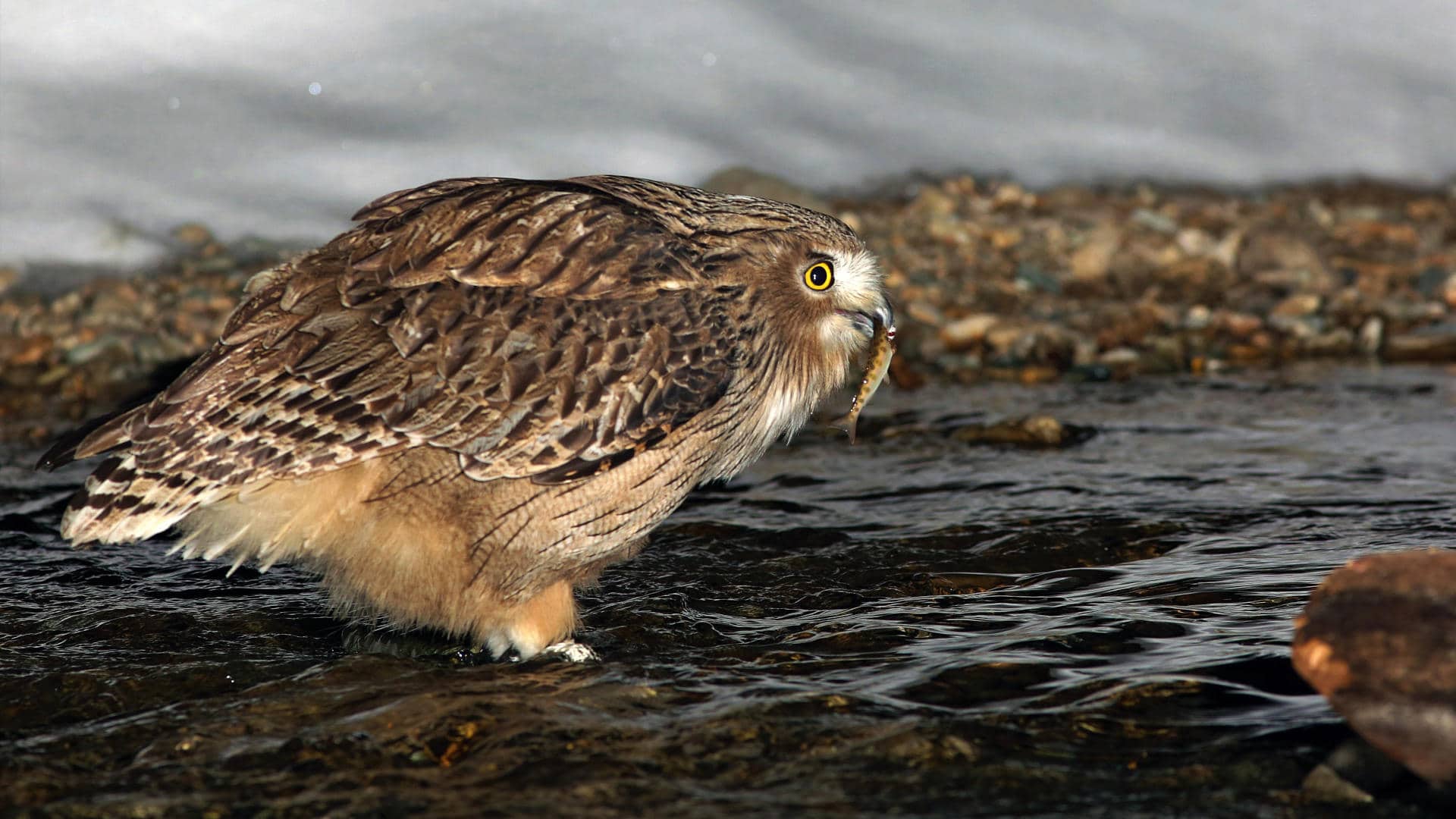In Russia’s far east, meeting a person alone in the wilderness is usually a bad thing. Some recluses in this remote region might be criminals of one kind or another: those hiding from law enforcement or those hiding from other criminals. But when conservationist Jonathan C. Slaght ran into a man with “a crazy look in his eyes” and one missing finger living alone in an abandoned World War II hydroelectric station, rather than make a quick exit, he took the hermit up on his offer to spend the night. The night turned into weeks and the hermit soon became a valued field assistant (albeit one who regularly asked questions like “Did the gnomes tickle your feet last night?”).
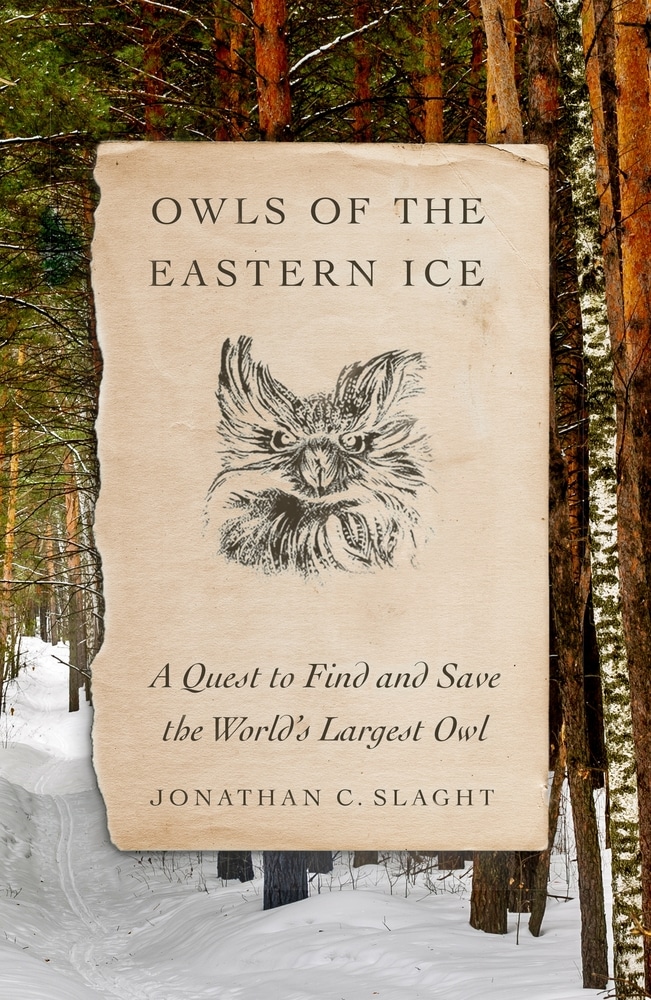
BOOK REVIEW — “Owls of the Eastern Ice: A Quest to Find and Save the World’s Largest Owl” by Jonathan C. Slaght (Farrar, Straus and Giroux, 356 pages).
In “Owls of the Eastern Ice: A Quest to Find and Save the World’s Largest Owls,” Slaght transports readers to the remote wilds of Primorye to join him on his quest to study one of the world’s least-known owls. Like Amur tigers (also known as Siberian tigers), Blakiston’s fish owls are top predators. They feast on salmon and thrive in the inhospitable wilderness of northeast Asia, primarily in Russia but also Japan and China.
Prior to Slaght’s five-year project, conducted for his doctoral research, only a smattering of scientific studies — many of them decades-old — existed on the species. Fewer than 2,000 fish owls still survive in the wild, and logging and new roads are increasingly infringing on the endangered bird’s habitat. The more scientists can learn about the species, the better equipped they will be to propose effective protections.
Slaght was uniquely qualified to find answers in this particular corner of the world. An American citizen, he lived in Moscow in the 1990s with his diplomat parents and later spent three years in the country’s far east with the Peace Corps. He speaks the language fluently and considers Primorye — where he continues to work for the Wildlife Conservation Society’s Russia program — a second home. He is also versed in Primorye’s fascinating history. In 2016, he published a new translation of “Across the Ussuri Kray,” a collection of travel writing by the naturalist Vladimir K. Arsenyev. Slaght references Arsenyev in “Owls of the Eastern Ice” and his study locations sometimes overlap with those of the 20th-century explorer’s.
Primorye’s stark realities seem to have hardly changed in the hundred-odd years between Arsenyev and Slaght’s visits. As Slaght describes, it’s a place of “pine and shadow,” where primordial dichotomies — “hungry or satiated, frozen or flowing, living or dead” — still define existence. The pace and feel of his narrative are also reminiscent of Arsenyev’s “Across the Ussuri Kray”: Both books offer intimate, hard-earned portraits of Primorye’s natural history, interspersed with colorful anecdotes about the hunters, hermits, and indigenous communities who call the rugged environment home.
Slaght’s study aimed to answer what he describes as a deceptively simple question: What landscape features do fish owls need to survive? The answer did not come easily, as evidenced by chapters with titles such as “The Monotony of Failure” and “The Banality of Road Travel.” Over the course of 20 total months spent in the field — much of it in the subzero Russian winter — Slaght painstakingly built his study from scratch, first by finding fish owl pairs, then by learning to trap the birds through trial and error, and finally by equipping them with tracking devices.
At each step, Slaght faced an onslaught of challenges: near strandings in the remote wilderness due to flooding, melting ice bridges and vehicular break-downs; gastrointestinal nightmares; forest fires; mosquitoes galore and parasites trying to inhabit his beard; blizzard delays and frozen equipment; equipment destroyed by owls; an overly talkative field assistant with a urine fetish; and splitting hangovers from complying with the Russian social tradition of finishing an open bottle of vodka (or, in one case, cleaning ethanol).
Slaght approaches the stream of mishaps, setbacks, and mini-disasters with dry humor and grit. At times, he even seems to derive a masochistic joy from the hardships. “Field work,” he notes, “is often regular repetition of challenging or unpleasant activities, an application of persistent pressure to a question until the answer finally emerges.”
The fish owls reveal themselves slowly, both to Slaght and to the reader. They start out as phantoms, their presence only hinted at in palm-sized, K-shaped tracks left on snowy river banks and in eerie, deep-throated duets that waft out of the thick of the Primorye forest. Slowly, through Slaght’s hard work and persistence, they come into sharper focus. They turn out to be just as otherworldly as the harsh landscape itself — “defiant, floppy goblin(s),” and “like one of Jim Henson’s darker creations,” as Slaght describes them.
Fish owls are the size of eagles, with 6.5-foot wide wingspans that sprout from comically fluffy, portly bodies, “as if someone had hastily glued fistfuls of feathers to a yearling bear,” Slaght writes. They have prodigious ear tufts, but because they hunt fish (a visual task rather than auditory one), they lack the facial feather disks that many other owl species use to amplify their hearing.
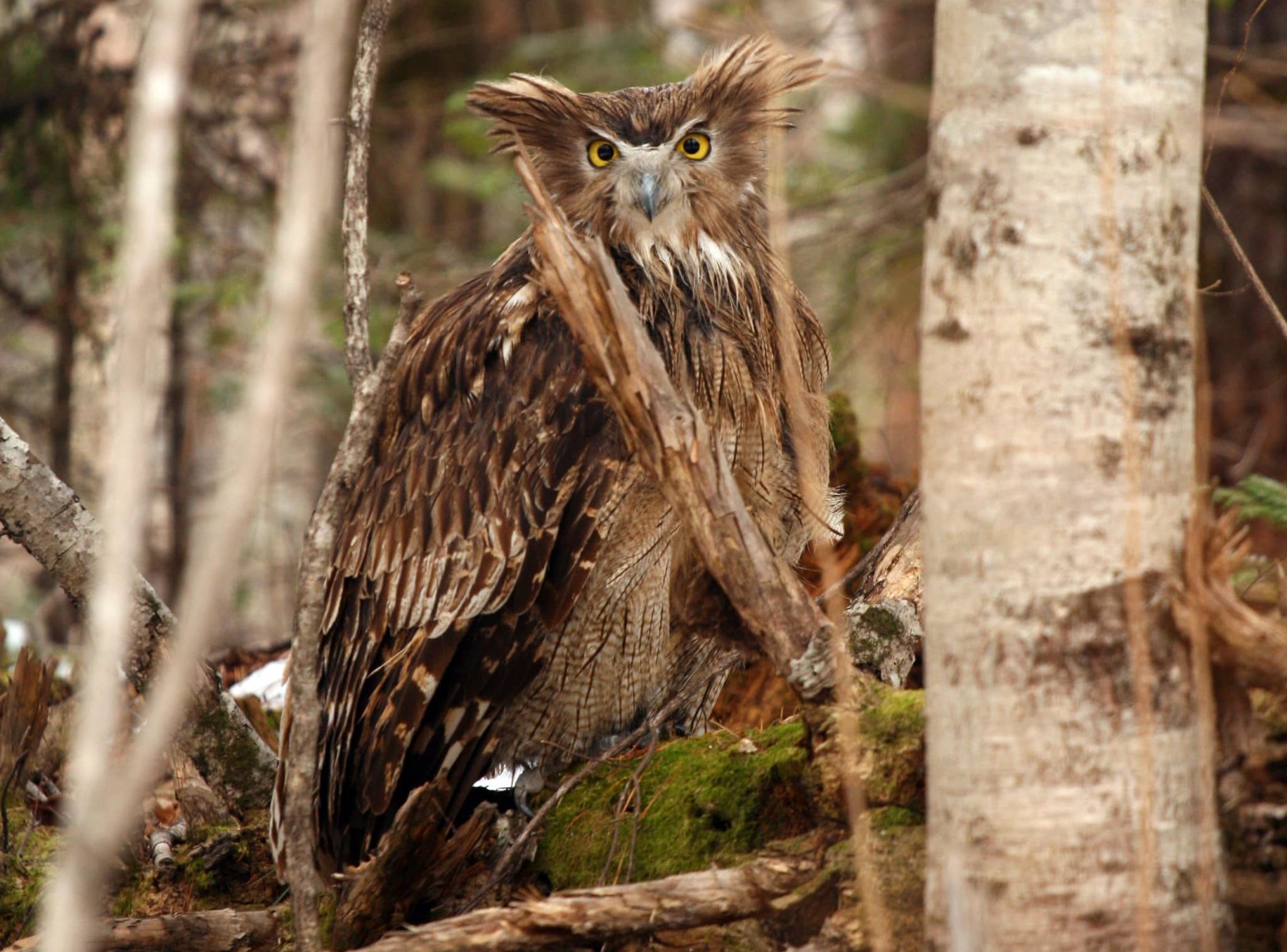

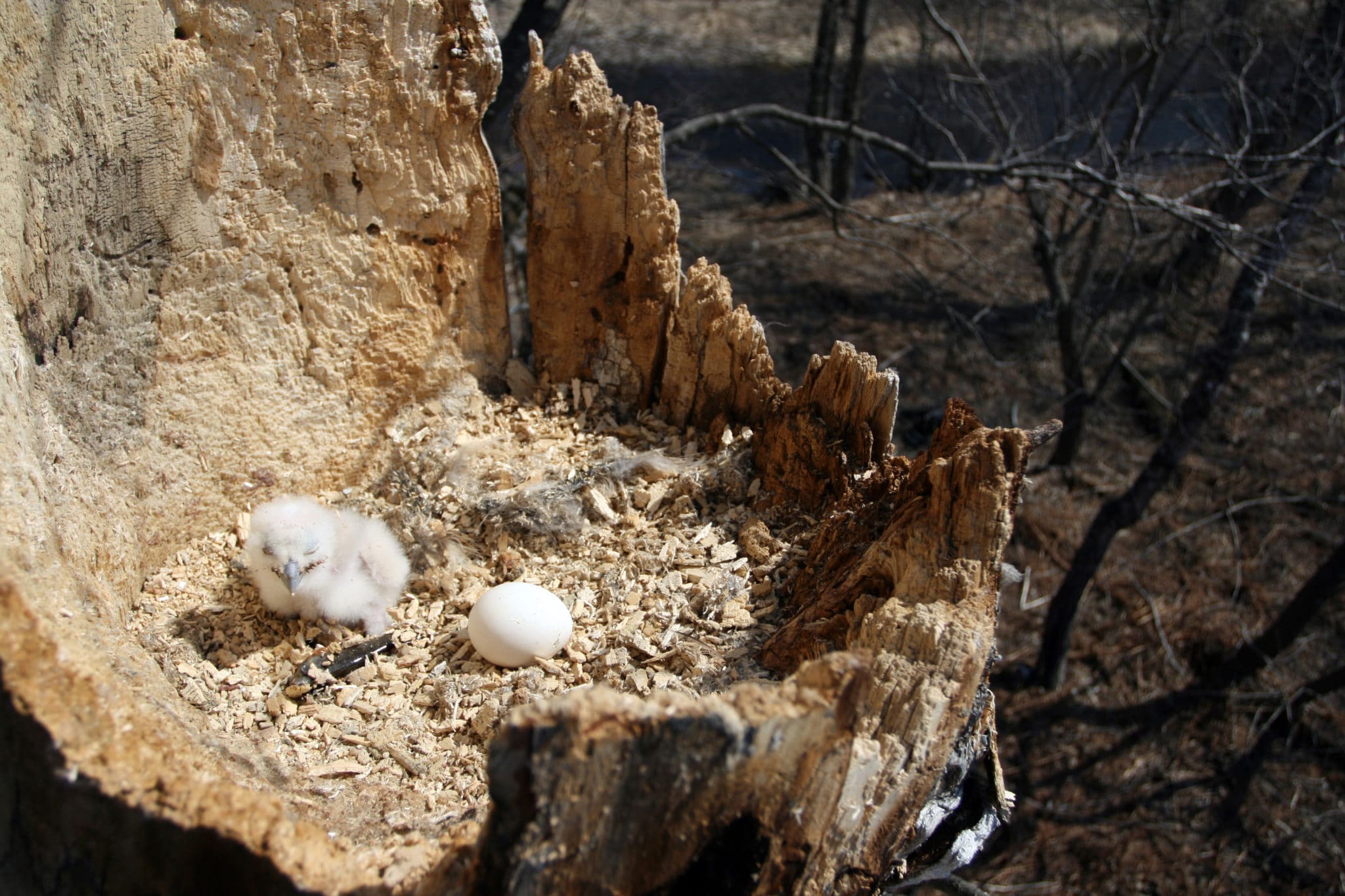
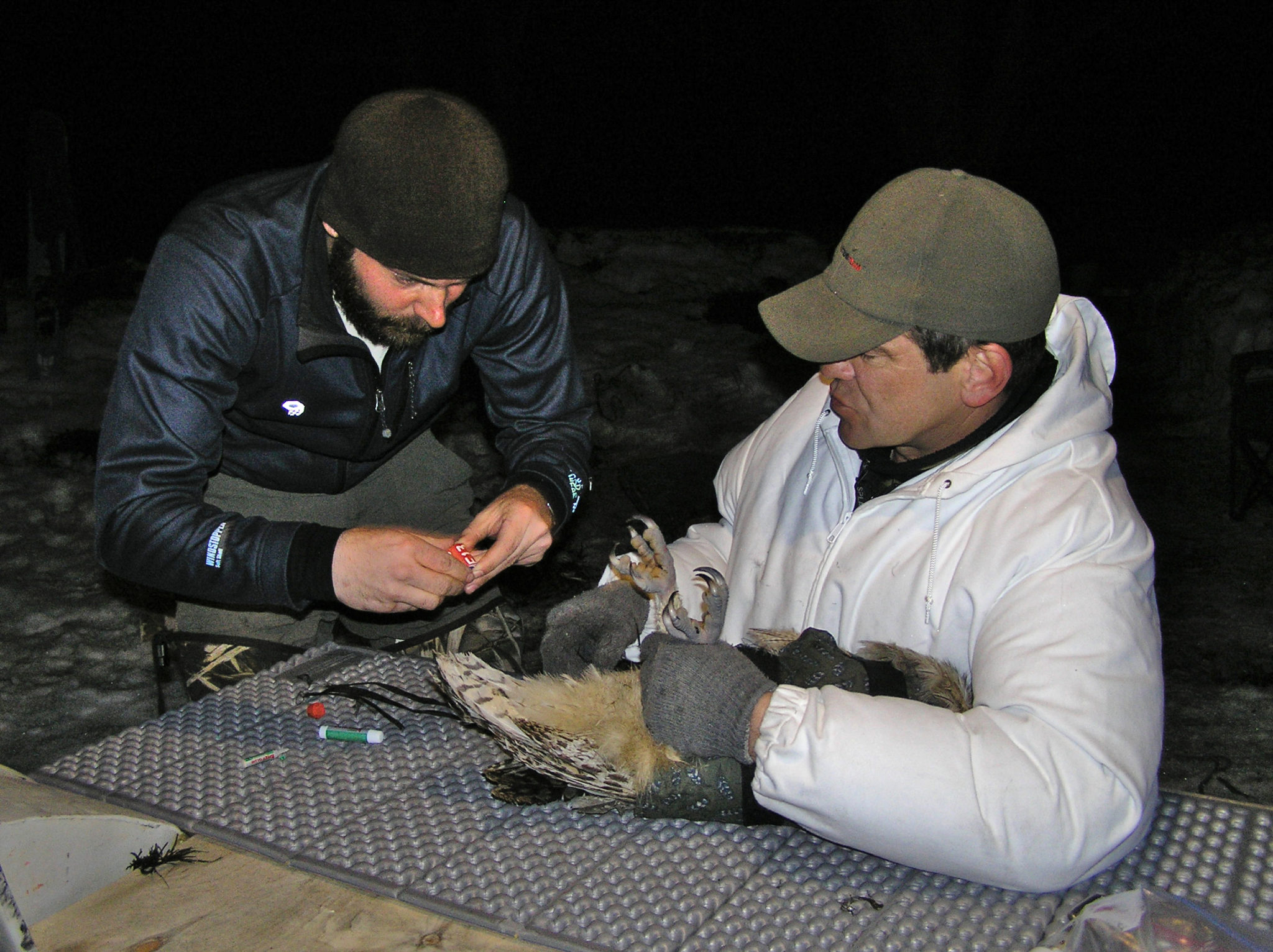
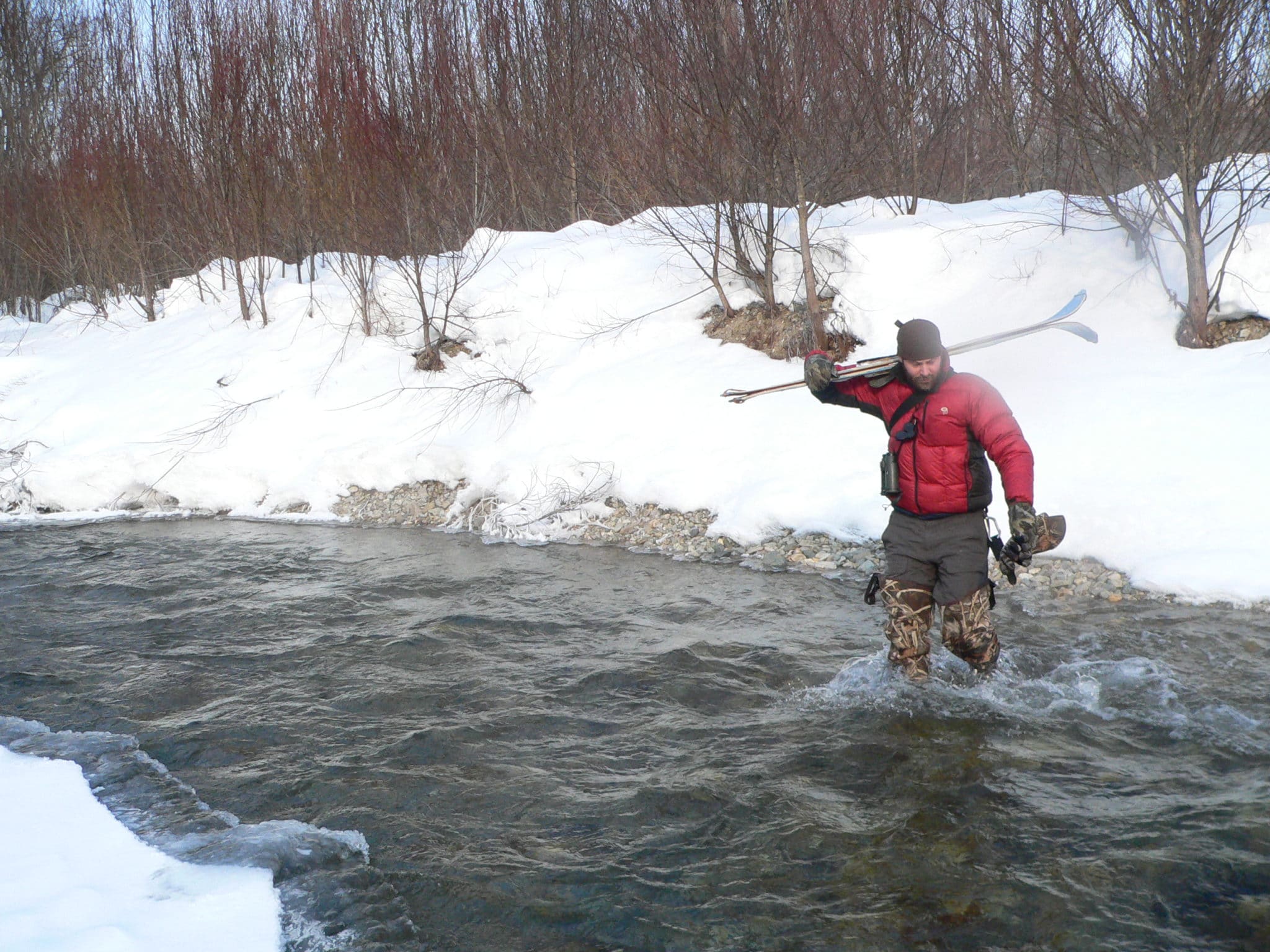
When threatened, fish owls can be aggressive — “a creature braced for battle,” as Slaght describes one captive — and a number of Slaght’s research subjects drew blood from him and his field assistants. The researchers got away easy, though: Slaght heard of a hunter who lost a testicle to a concealed fish owl fledgling when he squatted in the brush to use the bathroom.
In the end, all the suffering and perseverance paid off. Slaght’s findings about fish owl territory sizes and choice hunting and nesting grounds — valley forests with large, half-rotted old trees and rivers that do not freeze year-round and brim with plenty of fish — were used to create a conservation plan for the species. By overlaying his findings onto a map of Primorye, Slaght was able to determine that only 19 percent of prime fish owl habitat was protected, a discovery of great relevance for policymakers.
The findings also led to a number of victories in the private sector. One major logging company agreed to stop harvesting the types of old, rotting (and nearly commercially useless) trees that fish owls need for nesting — a public relations win at little cost to the loggers, Slaght writes. Some companies also agreed to start blocking unused logging roads and remove bridges, helping to reduce the chances of fish owls becoming roadkill (a serious threat) and to limit salmon poachers’ abilities to reach pristine stretches of river.
“Owls of the Eastern Ice” is a vivid, immersive account of existence in one of the planet’s most extreme intact wildernesses. Slaght has done his part to ensure that Primorye remains a place “where humans and wildlife still share the same resources,” and where fish owls continue to announce from the forest that Primorye remains wild.










